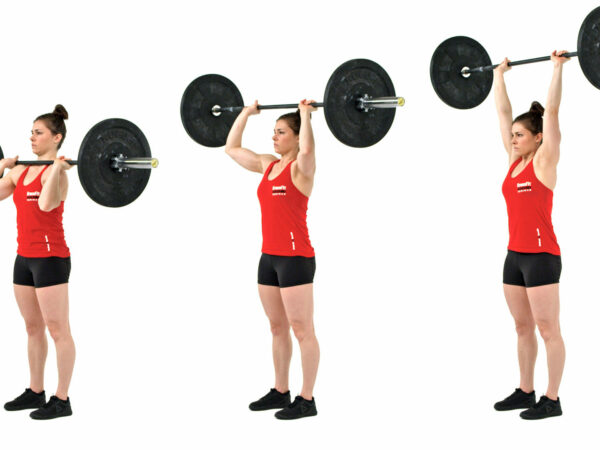The dumbbell snatch is a dynamic and powerful exercise that engages multiple muscle groups and provides numerous benefits for strength, power, and overall fitness. It combines elements of both strength training and cardiovascular conditioning, making it an excellent choice for individuals looking to improve their athletic performance or enhance their overall fitness levels. In this comprehensive guide, we will walk you through the proper technique for performing the dumbbell snatch safely and effectively, and explore the many benefits this exercise can offer.
Understanding the Dumbbell Snatch:
The dumbbell snatch is a compound movement that involves lifting a dumbbell from the ground and driving it overhead in one explosive motion. It primarily targets the muscles of the lower body, including the glutes, hamstrings, and quadriceps, while also engaging the muscles of the upper body, such as the shoulders, back, and arms. Additionally, the core muscles play a crucial role in stabilizing the body throughout the movement.
Proper Technique:
To perform the dumbbell snatch correctly and safely, follow these step-by-step instructions:
Step 1: Begin in a standing position with your feet shoulder-width apart, toes pointing slightly outward. Place a dumbbell on the floor in front of you.
Step 2: Lower yourself into a squat position, keeping your chest up and your back flat. Grasp the dumbbell firmly with an overhand grip.
Step 3: Push through your heels and explode upward, extending your hips, knees, and ankles simultaneously. As you do this, keep the dumbbell close to your body and use the momentum to propel it upward.
Step 4: Once the dumbbell reaches its highest point, quickly rotate your hand and punch it overhead, fully extending your arm. Your palm should be facing forward, and the dumbbell should be directly above your shoulder.
Step 5: Reverse the movement by lowering the dumbbell back down to the starting position, returning it to the ground in a controlled manner.
Step 6: Repeat the movement for the desired number of repetitions, then switch to the other side.
Remember to maintain proper form throughout the exercise. Keep your core tight, your back straight, and your knees in line with your toes. Avoid rounding your back or allowing the dumbbell to drift away from your body.
Safety Considerations:
While the dumbbell snatch is an effective exercise, it’s essential to prioritize safety. Here are some important considerations:
a. Start with a light weight: Begin with a weight that allows you to maintain proper form and technique. As you become more proficient, gradually increase the weight.
b. Warm up adequately: Perform a thorough warm-up before attempting the dumbbell snatch. This will help prepare your muscles and joints for the exercise, reducing the risk of injury.
c. Master the technique: Focus on mastering the proper technique before adding weight. Performing the exercise incorrectly can lead to muscle strains, back injuries, or other problems.
d. Listen to your body: If you experience pain or discomfort during the exercise, stop immediately and consult with a qualified fitness professional or healthcare provider.
Benefits of the Dumbbell Snatch:
Incorporating the dumbbell snatch into your fitness routine can offer several benefits:
a. Full-body engagement: The dumbbell snatch recruits multiple muscle groups simultaneously, providing a comprehensive full-body workout.
b. Increased power and explosiveness: The explosive nature of the dumbbell snatch helps develop power, speed, and explosiveness, which can enhance athletic performance in sports like sprinting, jumping, and throwing.
c. Improved strength and muscle development: The exercise targets major muscle groups, including the glutes, hamstrings, shoulders, and back, leading to increased strength and muscle growth.
d. Enhanced cardiovascular conditioning: The combination of strength and cardiovascular elements in the dumbbell snatch elevates heart rate and improves cardiovascular fitness.
e. Functional fitness: The dumbbell snatch mimics real-life movements like lifting objects from the ground and reaching overhead, improving your ability to perform daily activities with ease.
f. Time efficiency: Due to its compound nature, the dumbbell snatch allows you to work multiple muscle groups simultaneously, making it a time-efficient exercise.
Incorporating the Dumbbell Snatch Into Your Workout:
To incorporate the dumbbell snatch into your workout routine, consider the following options:
a. Stand-alone exercise: Perform several sets of dumbbell snatches, focusing on proper technique and gradually increasing the weight as you become more proficient.
b. Circuit training: Include the dumbbell snatch as part of a circuit routine, combining it with other exercises to create a challenging full-body workout.
c. High-intensity interval training (HIIT): Integrate the dumbbell snatch into a HIIT workout, alternating between periods of intense effort and short recovery periods.
d. Strength and power training: Incorporate the dumbbell snatch into your strength or power training routine to enhance explosive power and muscle development.
Remember to consult with a fitness professional or coach to tailor the exercise to your specific goals and fitness level.
In conclusion, the dumbbell snatch is a versatile and effective exercise that can benefit individuals of all fitness levels. By understanding and practicing the proper technique, prioritizing safety, and gradually increasing the intensity, you can reap the rewards of improved strength, power, and overall fitness. So grab a dumbbell, follow the guidelines outlined in this guide, and enjoy the benefits of the dumbbell snatch in your workout routine.
- Vape Kits By Geekvape-Comprehensive Review Top Vape Kits for an Unmatched Vaping Experience - February 17, 2024
- Dumbbell Snatch: How to Do It Safely, Plus Benefits - July 11, 2023
- What Are Tsa Guidelines When Flying With CBD - June 9, 2023

